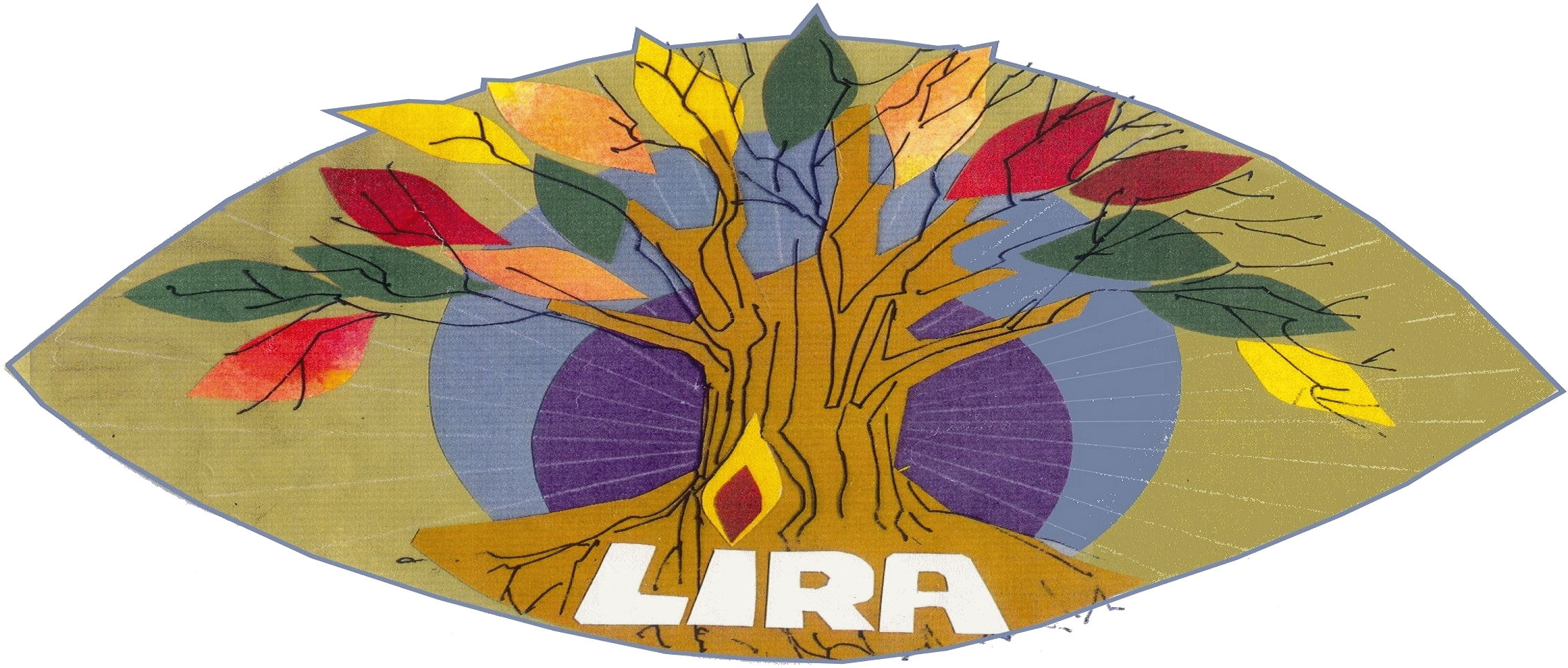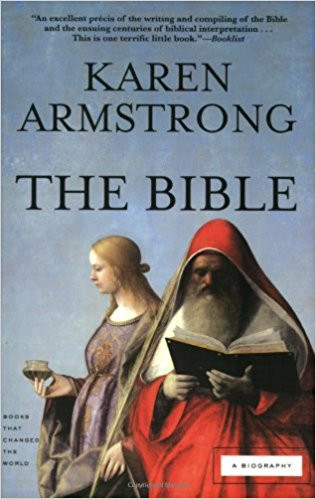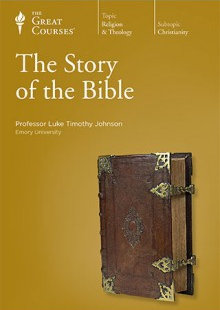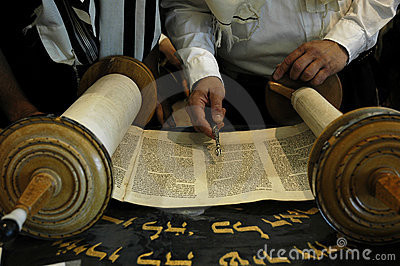
Notes on “The Story of the Bible” Class No. 1
Links to Other Classes
Next Class: No. 2
— Index
Preliminaries
The King James Bible is available as a free PDF downloaded from: http://www.bookbindery.ca/KJBIBLE.pdf
 Toby referenced:
Toby referenced:
- The Bible, a Biography by Karen Armstrong — https://www.amazon.com/Bible-Biography-Books-Changed-World/dp/0802143849
- “Human beings are meaning-seeking creatures. Unless we find some pattern or significance in our lives, we fall very easily into despair.”
- Toby said that literal interpretation of the Bible is a relatively recent development. Previously, people saw it as allegorical.
Luke Timothy Johnson, Emory University, lecturer
Lecture 1: Telling the Story of a Book
the Bible as a book of stories
Jesus speaks in parables and is also portrayed as a teller of stories
 “Texts of Terror” by Phyllis Trible
“Texts of Terror” by Phyllis Trible
- https://www.amazon.com/Texts-Terror-Literary-Feminist-Narratives-Overtures/dp/0800615379
Professor Trible focuses on four variations upon the theme of terror in the Bible. By combining the discipline of literary criticism with the hermeneutics of feminism, she reinterprets the tragic stories of four women in ancient Israel: Hagar, Tamar, an unnamed concubine, and the daughter of Jephthah. In highlighting the silence, absence, and oppostition of God, as well as human cruelty, Trible shows how these neglected stories-interpreted in memoriam-challenge both the misogyny of Scripture and its use in church, synagogue, and academy.
Bible = ta biblia [Greek] = the books
- since 1850 it has been printed an estimated 5 billion times in over 200 languages
- the Gideon Bible began in 1898. Two travelers formed the Gideon Society after reading the Bible together in a hotel.
The Bible was written by people who were poor and oppressed.
Five Questions
 Where does the story of the Bible begin?
Where does the story of the Bible begin?
- What is its origin?
- How did its stories become a collection?
- What was the implicit logic that its cannonizers saw?
- In what forms does the Bible appear?
- What were the social conditions for its publication?
- How did it go from a scroll to a book with covers?
- What are the differences in experiences in reading each?
- How many Bibles are there, and how many stories are there to tell?
- TaNak = the Bible to Jews =
27 compositions (originally in Greek) that constitute the New Testament for Christians
- Three Christian views of the Bible’s contents
- canonical compositions = belong in the Bible
- deuterocanonical compositions = belong but have not been included
- apocryphal compositions = don’t belong in the Bible
- In how many languages and how many versions does the Bible appear?
- The Septuagint = the old testament in Greek
- For Christians, translation into native languages is critically important, leading to discussions about how to translate certain words and phrases
- How does the interpretation of the Bible become part of its story?
- Discussions of what’s important and what’s not.
- Historical interpretation stands in opposition to both Jewish and Christian traditions. Historical interpretations seek to discover the first interpretations.
- Interpretation doesn’t only take place in sermons and commentaries, but also in acts of liturgy, works of art, in grand forms of musical expression, and in literature.
Four Chronological Stages of the Course (24 lectures)
- origins - where and how were they composed and the process by which they became a collection (canon)
- multiple versions of the Christian Bible in antiquity and patterns of interpretation in Jewish and Christianity
- multiple strands of the Bible's story renaissance, reformation, and enlightenment
- carries the story in modernity with discussion of dissention
DVD: https://www.amazon.com/Great-Courses-Story-Bible/dp/1598032496
Description: Discover the story of the world’s most consistently best-selling book, which came into being through a remarkable and complicated process. In 24 stimulating lectures, Professor Johnson investigates the many forms the Bible has taken and the ways history, scholarship, and technology have helped shape this great tradition, as well as the Bible's powerful influence on human history and culture. The Bible has long served as a powerful force, both reflecting and shaping the cultures that have read and embraced it. Over the centuries, perceptions of the Bible have inspired men and women and shaped nations; they've sent nations to war and martyrs to their deaths. The struggle of translation has been a battleground for controlling the meaning of sacred text, a struggle that reached its peak during the Renaissance and the Enlightenment. From the early history of the New Testament, when Hebrew and Greek sources built a new story on the foundation of the ancient Jewish tradition, to the world-changing invention of the printing press, a revolutionary innovation that contributed to the Protestant Reformation, this enthralling story gives you a deep appreciation for the tremendous power of this astonishing book - one that has endured through centuries and touched the lives of countless millions.
Course Guidebook: https://www.amazon.com/Lecture-Transcript-Course-Guidebook-Courses/dp/1598032518
- note this is supposed to be a 2-volume set, but when Jesse bought it he only received Part 1 of 2 (he has written to the vendor about getting the other part)
24 lectures of 30 minutes each
- Telling the Story of a Book
- Making TaNaK
- Forms of Jewish Scripture
- Birth of the Christian Bible
- Formation of Jewish and Christian Canons
- Writing and Copying Manuscripts
- Imperial Sponsorship and the Bible
- Texts and Translations-The Ancient East
- Old latin and the Vulgate
- Other Ancient Versions
- Monasteries and Manuscripts
- Interpretation within Judaism
- Interpretation in Medieval Christianity
- The Renaissance, Printing, and the Bible
- The Protestant Reformation and the Bible
- Translating the Bible into Modern languages
- The First Efforts at Englishing the Bible
- The King James Version
- The Romance of Manuscripts
- Searching for the Critical Text
- The Historical-Critical Approach
- The Bible in Contemporary Judaism
- Contemporary Christians and Their Bibles
- The Bible’s Story Continues
Septuagint and Targens = first translations
 Lecture 2: Making TaNaK
Lecture 2: Making TaNaK
The Hebrew Bible is organized into three main sections
- the Torah, or “Teaching,” also called the Pentateuch or the “Five Books of Moses”
- the Nevi'im, or Prophets
- the Ketuvim, or Writings
- it is often referred to as the Tanakh, a word combining the first letter from the names of each of the three main divisions
In Islam, the Bible is only holy in Arabic
The origins are much disputed and highly speculative
Generally accepted truths
- written by a nomadic people
- original language was Hebrew, containing only consonants, not vowels
- changes in words are morphological (prefixes and suffixes) changed meanings
- vowel sounds were handed down as an oral tradition
- thus, it was only possible to read the Bible in the context of oral tradition
- Aramaic is a more modern form of Hebrew.
- Aramaic (אַרָמָיָא Arāmāyā, Syriac: ܐܪܡܝܐ, Arabic: آرامية) is a language or grouof languages belonging to the Semitic subfamily of the Afroasiatic language family
- more specifically, it is part of the Northwest Semitic group, which also includes the Canaanite languages such as Hebrew and Phoenician
- writing was a social phenomenon. Reading and writing were rare in the ancient world. It required by skill and intruments.
 Basic Information
Basic Information
“Torah” is rich in connotation, but at its root it means “teaching” or “instruction”
- the Christian term is “Pentateuch”
Since the Enlightenment scholars have agreed that not all books were written by the same person, and that they were written over a long period of time. Evidence:
- doublets = stories that seem to be told twice, for example, the creation of male and female in the image of G-d and then creation of female from a rib of male, with no mention of the image of G-d. These call out for explanation.
- there are different names for G-d, e.g., Yaweh and Elohim
- many see four distinct sources:
- Yahwist (10th century BCE)
- Elohist
- Deuteronomist (reformed voice of 6th century BCE)
- Priestly (concerned with geneologies, laws of sacrifice, etc.)
The TaNaK is the grand notion of the creation of the Jewish people and their relationship with G-d.
1800 BCE is generally accepted as the Bible’s origin
- Genesis - Breshit (Beginnings)
- Exodus - Shemot (Names)
- The main importance is not the exodus from Egypt, but how that event is a prelude to the making of the covenant and the giving of the law.
- Leviticus - Wayikra (He Called)
- Continuation of legislation, particularly to the practices of worship and sacrifice.
- Numbers - Bamidbar (In the Desert)
- Deuteronomy - Devarim (Words)
Contents
The Law = 5 books (from https://en.wikipedia.org/wiki/Bible)
- Genesis = Bereshit (בְּרֵאשִׁית, literally “In the beginning”)
- Exodus = Shemot (שִׁמוֹת, literally “Names”)
- Leviticus = Vayikra (ויקרא, literally “And He called”)
- Numbers = Bəmidbar (במדבר, literally “In the desert [of]”)
- Deuteronomy = Devarim (דברים, literally “Things” or “Words”)
Nevi’im = 21 writings in the 2nd portion
- The Nevi’im are divided into two groups.
- The Former Prophets (Hebrew: נביאים ראשונים Nevi'im Rishonim) consists of the narrative books of Joshua, Judges, Samuel and Kings
- The Latter Prophets (Hebrew: נביאים אחרונים Nevi'im Aharonim) include the books of Isaiah, Jeremiah, Ezekiel and The Twelve minor prophets.
- Former Prophets =
6 books
- Joshua, Judges, Ruth, 1 and 2 Samuel, and 1 and 2 Kings
- Latter Prophets = 15 books =
spokespersons of G-d
- Major (3): Isaiah, Jeremiah, Ezekial
- Minor (12): Hosea, Joel, Amos, Obadiah, Jonah, Micah, Nahum, Habakkuk, Zephaniah, Haggai, Zechariah, Malachi
Ketuvim = 13 writings
- Megillot (Scrolls)
- Song of Songs, Ruth, Lamentations, Ecclesiastes, Book of Esther (read on Purim)
- Wisdom Literature
- Psalms, Proverbs, and Job
- Jewish History
- 1 and 2 Chronicles, Ezra, Nehemiah, Book of Daniel
Total= 39 writings in Jewish Bible



 Toby referenced:
Toby referenced: “Texts of Terror” by Phyllis Trible
“Texts of Terror” by Phyllis Trible Where does the story of the Bible begin?
Where does the story of the Bible begin?
 Lecture 2: Making TaNaK
Lecture 2: Making TaNaK Basic Information
Basic Information